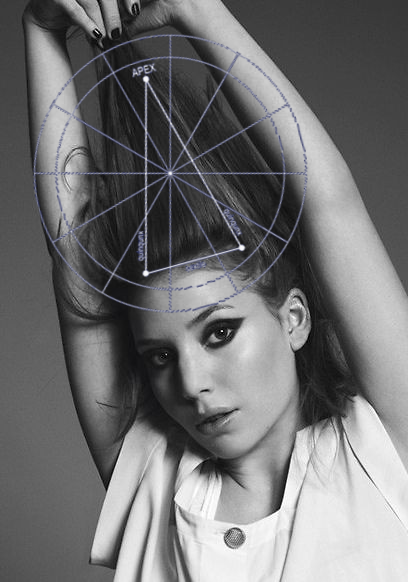
Elemental Love Insights: Why Him, Why Her
 Anthropologist Helen Fisher dives deep into the complexities of love and human connection in her book Why Him, Why Her: Finding Love by Understanding Your Personality Type. Through extensive research on the biological roots of romantic attraction, Fisher has become a leading voice in the field, offering meaningful insights into why we’re drawn to certain people. She identifies four core personality types—Explorer, Builder, Director, and Negotiator—each reflecting distinct traits and romantic tendencies. Interestingly, Fisher’s typology mirrors ancient systems, particularly the elemental framework of astrology: fire, earth, air, and water. This isn’t a new phenomenon. Psychologists often look for patterns and archetypes to better understand human behavior. Carl Jung, one of the pioneers in personality theory, developed a system of four primary psychological functions: Intuition (Fire), Sensation (Earth), Thinking (Air), and Feeling (Water). These parallels suggest that our search to classify and understand personality has ancient roots—and continues to evolve.
Anthropologist Helen Fisher dives deep into the complexities of love and human connection in her book Why Him, Why Her: Finding Love by Understanding Your Personality Type. Through extensive research on the biological roots of romantic attraction, Fisher has become a leading voice in the field, offering meaningful insights into why we’re drawn to certain people. She identifies four core personality types—Explorer, Builder, Director, and Negotiator—each reflecting distinct traits and romantic tendencies. Interestingly, Fisher’s typology mirrors ancient systems, particularly the elemental framework of astrology: fire, earth, air, and water. This isn’t a new phenomenon. Psychologists often look for patterns and archetypes to better understand human behavior. Carl Jung, one of the pioneers in personality theory, developed a system of four primary psychological functions: Intuition (Fire), Sensation (Earth), Thinking (Air), and Feeling (Water). These parallels suggest that our search to classify and understand personality has ancient roots—and continues to evolve.
In astrology, each of the four elements—fire, earth, air, and water—shows up through different signs, and each element forms its own little group, or “trigon,” that helps describe personality traits. Take the fire signs, for example: Aries, Leo, and Sagittarius. They’re known for being confident, energetic, and quick to act. The earth signs—Taurus, Virgo, and Capricorn—are usually more grounded, practical, and reliable. It’s a fun way to get a snapshot of someone’s natural vibe.
Jung took things a step further by introducing four psychological functions—or ways we experience the world—along with two core personality attitudes: introversion and extroversion. These align closely with the four elemental types. But this idea isn’t new. Back in the Renaissance, people believed in the idea of the four humors in the blood, which led to the idea of four basic temperaments: melancholic (watery), phlegmatic (earthy), sanguine (airy), and choleric (fiery). According to this belief, imbalances in the humors caused illness. So, the idea of personality “types” actually has deep roots—and you can trace it all the way back to astrology, one of the earliest systems humans ever created.
In her work, Helen Fisher aligns each of her four personality types with elemental qualities, but what sets her research apart is the discovery of a connection between these types and specific neurochemical systems in the body. The Explorer, vibrant and daring (fire), shows heightened sensitivity to the dopamine system—fueling risk-taking behavior, high energy, and an insatiable appetite for novelty and adventure. The Builder (earth), by contrast, is linked to serotonin and is often marked by traits such as dependability, tradition, and a strong sense of duty. The Director (air), the third type, correlates with elevated testosterone levels and is characterized by analytical thinking, decisiveness, and spatial intelligence. Lastly, the Negotiator (water)—a type found in both men and women—is deeply attuned to estrogen, resulting in a personality that leans toward empathy, intuition, and emotional depth. Fisher portrays Negotiators as natural harmonizers, driven by a desire to create balance and understanding in their relationships.
The Negotiator and Director
To better understand patterns of romantic attraction, Helen Fisher has studied hundreds of couples. From her research, she notes a particularly strong magnetic pull between Directors (Air) and Negotiators (Water). One compelling example she offers is Bill and Hillary Clinton. Fisher contrasts Bill’s empathetic, expressive nature—typical of a Negotiator—with Hillary’s focused, determined energy, which aligns with the Director archetype.
However, a closer look at their astrological charts tells a slightly different story. Hillary, often associated with the Director role, actually reflects strong Negotiator traits through her Scorpio placements—an emotionally intense water sign—alongside several planets in fire signs, suggesting an Explorer influence as well. Bill, on the other hand, displays dominant air energy through his Libra sun and other planetary placements, supporting the Director profile, while also carrying fiery elements that enhance his charisma and passion.
Integrating astrology with psychology offers a powerful framework for understanding individuals more efficiently and with greater depth. Astrology serves as a valuable tool for identifying personality patterns through one’s astrological chart, allowing for quicker insight into core traits and tendencies. When used alongside traditional psychological methods, astrology can enrich the therapeutic process, offering deeper layers of self-awareness and context. This is not to suggest that psychologists are unable to achieve meaningful results without astrology—they certainly can. Rather, astrology can act as a complementary guide.
Relating
Building on key concepts from Jungian psychology, Liz Greene’s influential book Relating (1977) explores the connection between conscious and unconscious processes in human relationships. In her chapter on Psychological Types, Greene examines how our dominant elemental type influences our perception of the world and our relational patterns. She suggests that earth signs are often drawn to fire signs, while water signs feel a natural pull toward air signs—similar to what Jung described as the “opposing function.” These elemental pairings tend to bring together individuals with contrasting qualities, often leading to fascinating and complicated relationships.
Water, representing the opposite capacity—emotion—is drawn to air like a magnet. As long as the unconscious projection is powerful enough, the partner will appear watery even if he or she is not actually a good hook, meaning that the other’s natal chart does not reveal a significant emphasis of planets in water signs. Air is known for being a bad judge of character since he always goes with his head instead of his heart—that is, unless Eros choose him, of course.
Fire, Earth, Air, and Water
Helen Fisher’s theory might not be revolutionary in terms of its four personality types, but it definitely backs up what astrologers have known for ages. Sure, personality tests can offer some insight, but an astrological chart gives a much deeper, more layered look at a person. The classic contrast between “feeling types” and “thinking types” has been talked about forever, and while relationship compatibility is nothing new, Fisher brings a modern lens to the conversation. It’s also worth noting that within the elements—fire, earth, air, and water—there are different modes: cardinal, fixed, and mutable. Each one brings its own flavor to how someone approaches life, and these differences can have a big impact on attraction or conflict.
In her personality test, Helen Fisher even includes a fun bit about doodling habits. People with estrogen-driven, water-like Negotiator traits often sketch soft, feminine images—think hearts, flowers, or baby faces. Meanwhile, Director types (air signs) tend to go for clean lines, geometric shapes, or mechanical-looking drawings. While a lot of her ideas reflect the classic elemental typology found in astrology, Fisher also brings in new and relatable examples—especially when it comes to relationships—that fit right into the astrological world.

As someone with a strong water influence in my chart, the pages of my work notebook have little love hearts and star patterns scattered throughout—some even resembling the sextile aspect. As a water sign woman, my path has always been a deep, emotional journey—one that brings together my inner world and the rhythms of the universe. Those doodles say a lot about me: a blend of love, empathy, and a quiet connection to something bigger.



















 Venus Trine Pluto: Dark Desires
Venus Trine Pluto: Dark Desires
 Mars Conjunct Pluto Synastry
Mars Conjunct Pluto Synastry
 Moon Conjunct Mars Natal Aspect
Moon Conjunct Mars Natal Aspect
 Venus-Pluto Synastry: A Love So Powerful That It Might Just Kill Them
Venus-Pluto Synastry: A Love So Powerful That It Might Just Kill Them
 Saturn in the 1st House: From Self-Doubt to Lasting Identity
Saturn in the 1st House: From Self-Doubt to Lasting Identity
 Venus Trine Mars Synastry
Venus Trine Mars Synastry
 Reflections on a Past Venus-Pluto Synastry Aspect
Reflections on a Past Venus-Pluto Synastry Aspect
 The Scorpio Teenager
The Scorpio Teenager
 Mars-Pluto Synastry: Something Quite Dark and Dangerous
Mars-Pluto Synastry: Something Quite Dark and Dangerous
 Mars in Aquarius: Sex drive
Mars in Aquarius: Sex drive
 The Yod Aspect Pattern: The Mystical Power of the “Finger of Fate”
The Yod Aspect Pattern: The Mystical Power of the “Finger of Fate”
 Emotional Understanding: Moon Trine Synastry Aspects Interpreted
Emotional Understanding: Moon Trine Synastry Aspects Interpreted
 Sun Square Pluto Natal Aspect: I Am Titanium
Sun Square Pluto Natal Aspect: I Am Titanium
 Uranus Transits: 1st House: Winds of Change:
Uranus Transits: 1st House: Winds of Change:
 Moon Conjunct Pluto Synastry
Moon Conjunct Pluto Synastry
 The Moon: The Goddess of the Night
The Moon: The Goddess of the Night
 Venus Conjunct Neptune Synastry: Euphoria and the Aftermath
Venus Conjunct Neptune Synastry: Euphoria and the Aftermath
 Saturn Transits Mars: When the God of Time Meets the God of War
Saturn Transits Mars: When the God of Time Meets the God of War
 Pluto in Libra in the 2nd House: Lessons on Self-Worth and Financial Independence
Pluto in Libra in the 2nd House: Lessons on Self-Worth and Financial Independence